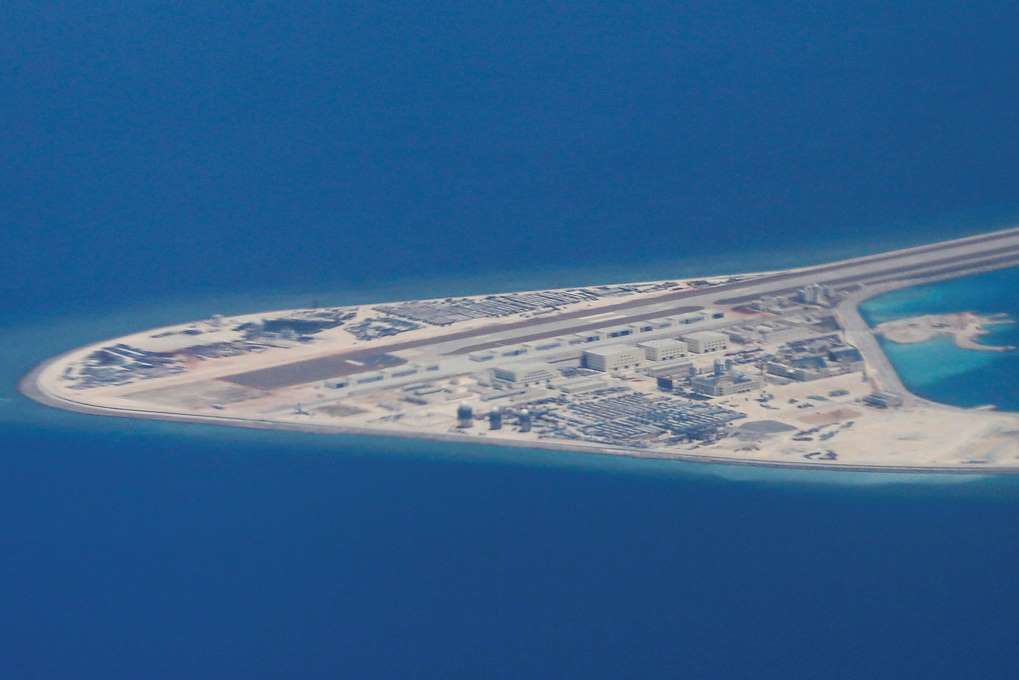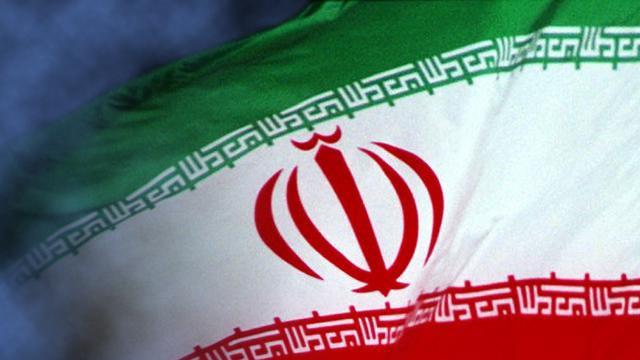June 3, 2017
BEIJING — China’s military vowed Monday to step up air and sea patrols after an American warship sailed near a disputed island in the South China Sea in what Beijing called a “serious political and military provocation.”

June 3, 2017
BEIJING — China’s military vowed Monday to step up air and sea patrols after an American warship sailed near a disputed island in the South China Sea in what Beijing called a “serious political and military provocation.”

In this April 2017 file photo, an airstrip, structures and buildings on China's man-made Subi Reef in the Spratly chain of islands in the South China Sea are seen from a Philippine Air Force C-130 transport plane. – Bullit Marquez/AP
Meanwhile, Chinese President Xi Jinping complained to President Trump about “negative factors” undermining relations between the two countries.
The past few days have seen a dramatic downturn in relations between the two sides, after the United States announced its intention to sell arms to Taiwan and sanction a Chinese bank doing business with North Korea.
Then, on Sunday, the USS Stethem, an American guided-missile destroyer, sailed within 12 nautical miles of Triton Island, a small isle in the Paracel Islands chain claimed and controlled by China, a U.S. defense official said. The Stethem’s route marked the second such operation since Trump took office.
The Paracels are among a group of islands and atolls in the South China Sea at the heart of ongoing tensions in Southeast Asia. China claims full sovereignty over the sea and has built fully functional military facilities complete with airfields and antiaircraft defenses on some islands.
The White House, in both the Obama and Trump administrations, has seen the militarization of the South China Sea as a threat to stability in the resource-rich region, where ships from numerous countries have long fished.
China’s Defense Ministry said the United States has “seriously damaged strategic mutual trust” between the two countries by entering what it claimed were China’s territorial waters, while the country’s Foreign Ministry accused the United States of staging a “serious political and military provocation.”
The incident came just hours before Trump spoke by telephone to Xi — on Sunday night in Washington, Monday morning in Beijing.
During the call, Trump “raised the growing threat posed by North Korea’s nuclear and ballistic missile programs,” the White House said in a statement. Trump earlier spoke by telephone to Japanese Prime Minister Shinzo Abe on the same subject.
But Xi also took the opportunity of the call to make his feelings known, requesting the United States “handle the Taiwan issue appropriately,” according to a Chinese statement.
U.S.-China relations appeared to be on an upswing after Trump said he and Xi had enjoyed “great chemistry” at a meeting in Florida in April.
At the time, Trump expressed confidence in China’s efforts to apply pressure on North Korea to end its nuclear and missile defense program. But officials say frustration has grown in the White House with China’s reluctance to tighten the screws on Pyongyang as much as Washington would have liked.
Xi said bilateral relations have achieved some “important results” since the two men met at Trump’s Mar-a-Lago resort, but noted that they have since been affected by some “negative factors.”
“Xi stressed that both China and the United States need to control the general direction of the bilateral relationship in light of the consensus reached at the Mar-a-Lago summit,” China’s government said.
Neither statement mentioned the tensions over the South China Sea.
U.S. officials said the Navy’s action, known as a freedom-of-navigation operation, or FONOP, was planned in advance and was not targeted at any one country, nor aimed at making a political statement.
But China accused the United States of deliberately stirring up trouble in the South China Sea and staging “provocative operations” that violate China's sovereignty and threaten its security.
China, which has enjoyed de facto control of the Paracels since expelling Vietnam in a military engagement in 1974, said the islands, which it calls the Xisha, are an “inherent part of Chinese territory.”
The Foreign Ministry said the Stethem had “trespassed” there, entering the waters “without China’s approval” and committing “a serious political and military provocation.”
Wu Qian, a spokesman for the Defense Ministry, said the United States has “refused to mend its ways despite repeated criticisms.”
He said the American action seriously damaged strategic mutual trust and military relations between the two sides, endangered the safety of front-line officers and soldiers from both sides, and undermined regional peace and stability.
“The Chinese army will strengthen its defense capacity, increase the intensity of its sea and air patrols, and firmly defend national sovereignty and security, according to the extent of the threat that its national security is facing,” he said in a statement.
Triton Island is claimed by China, Vietnam and Taiwan. In May, a U.S. destroyer sailed well within 12 miles of Mischief Reef, a man-made island in the Spratly Islands to the south of the Paracels.
Fox News, which first reported on Sunday’s incident, said a Chinese warship tailed the Stethem as it sailed past the island, although it is unclear how close the ship came to the American vessel.
The 12-mile line is the internationally recognized distance that separates the shores of a sovereign nation from international waters. The United States has routinely conducted voyages within this 12-mile limit around islands in the South China Sea as a message to countries such as China, Taiwan, Vietnam and the Philippines.
Many of these nations have laid claim to islands in the South China Sea, some of which are no more than tiny strips of sand and reef. The last time the U.S. Navy sailed near Triton Island was in January 2016, when the USS Curtis Wilbur came within 12 miles of its shores. The Pentagon did not notify any of the island’s claimants before that operation.
Capt. Charlie Brown, a spokesman for the U.S. Navy’s Pacific Fleet, did not confirm the Sunday operation, but said in an emailed statement that the Navy routinely conducts FONOPs. He said the operations are not “about any one country, nor are they about making political statements.”
“U.S. forces operate in the Indo-Asia-Pacific region on a daily basis, including in the South China Sea,” Brown said. “All operations are conducted in accordance with international law and demonstrate that the United States will fly, sail and operate wherever international law allows. That is true in the South China Sea as in other places around the globe.”
The Stethem, an Arleigh Burke-class destroyer, is based in Japan.
Courtesy: Washington Post
















































































































